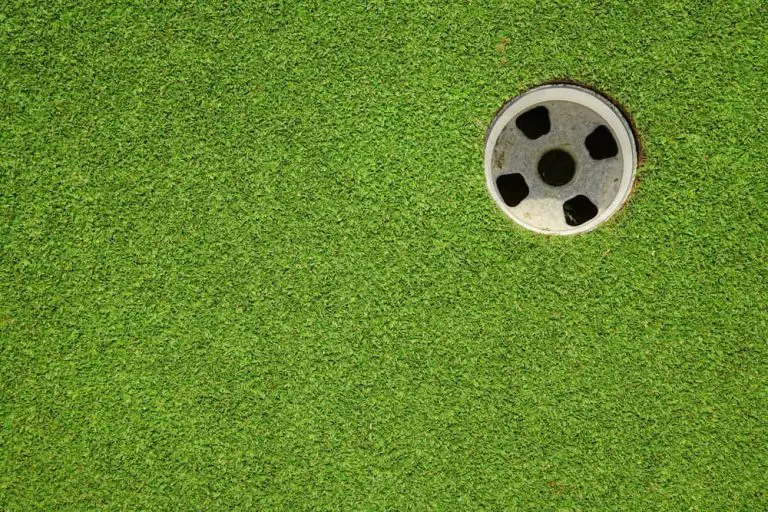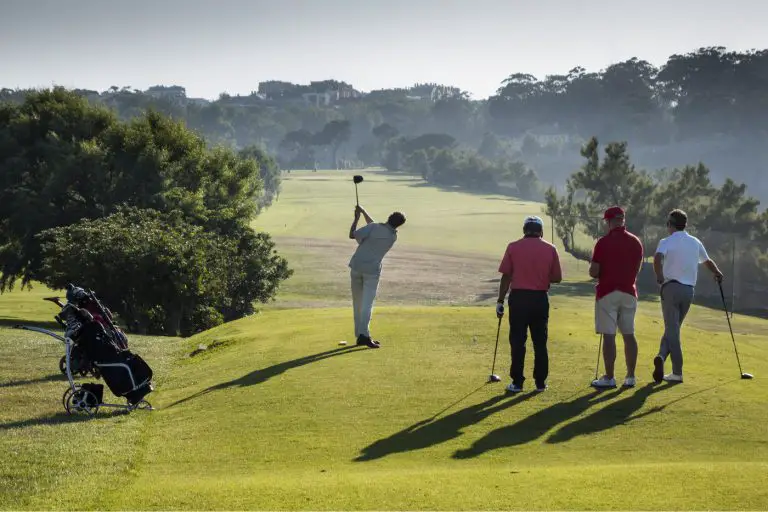How Far Can You Throw A Golf Ball

Golf is a sport that is often associated with precision and control, where players use clubs to strike the ball with accuracy and finesse. However, have you ever wondered how far you can throw a golf ball? While throwing a golf ball may not be a traditional aspect of the game, it is an intriguing concept that piques the curiosity of many golf enthusiasts.
In this comprehensive guide, we will explore the fascinating world of golf ball throwing and delve into the factors that influence how far a golf ball can be thrown. From physical attributes and techniques to training strategies and equipment considerations, we will provide insights and practical tips to help you unleash your throwing potential.
Throwing a golf ball requires a combination of strength, technique, and coordination. Whether you are a golf player looking to explore a different aspect of the game or simply curious about the limits of your throwing ability, this guide will serve as your roadmap to understanding and improving your golf ball throwing distance.
Join us as we embark on this journey to unravel the mysteries of golf ball throwing and discover just how far you can propel a golf ball through the air. Get ready to challenge your skills, push your boundaries, and experience the thrill of seeing a golf ball soar to impressive distances.
Factors Affecting Golf Ball Throwing Distance
Throwing a golf ball involves a combination of physical strength, technique, and body mechanics. Understanding these factors is crucial to achieving maximum throwing distance. Let’s delve into each factor:
Physical Strength and Conditioning
Throwing a golf ball requires power and explosiveness from the upper body. Developing the necessary strength and conditioning can significantly impact your throwing distance. Here’s what you need to consider:
- Strength Training: Engage in exercises that target the muscles involved in throwing, such as the shoulders, arms, and core. Incorporate exercises like overhead presses, rows, and rotational movements to build strength.
- Conditioning Exercises: Improve your endurance and explosiveness through high-intensity exercises like medicine ball slams, kettlebell swings, and plyometric exercises. These exercises help generate power and maximize your throwing potential.
Technique and Body Mechanics
Proper technique and efficient body mechanics play a crucial role in optimizing throwing distance. Pay attention to the following aspects:
- Grip: Find a comfortable grip that allows you to generate power and control during the throw. Experiment with different grips to determine the one that works best for you.
- Footwork: Proper footwork and weight transfer are essential for generating power in your throw. Mastering the footwork involved in shifting your weight from the back foot to the front foot can significantly enhance your throwing distance.
- Arm Action: Focus on the mechanics of your arm action, including the wind-up, shoulder rotation, and elbow extension. A smooth and coordinated arm action can lead to increased velocity and distance.
Now that we understand the factors affecting golf ball throwing distance, let’s explore various techniques to maximize your throws.
Throwing Techniques for Maximum Distance
To achieve maximum throwing distance, different techniques can be employed. Let’s explore some of the most effective throwing techniques:
Overhand Throwing Technique
The overhand throwing technique is commonly used in golf ball throwing. It involves an over-the-top motion, similar to throwing a baseball or a football. Follow these tips to enhance your overhand throws:
- Grip: Hold the golf ball with your fingers spread across the surface for a secure grip.
- Wind-up: Start with your throwing arm back and your non-throwing arm extended forward for balance.
- Power Generation: Rotate your hips and torso, transferring your weight from your back foot to your front foot, while simultaneously extending your throwing arm forward.
- Release: At the release point, snap your wrist and fingers to generate maximum velocity.
Sidearm Throwing Technique
The sidearm throwing technique involves a lower arm angle, resembling a sidearm baseball pitch or a frisbee throw. Here’s how you can maximize your distance using the sidearm technique:
- Grip: Hold the golf ball with a comfortable grip, allowing for control and power.
- Stance: Position your body sideways with your throwing arm extended to the side.
- Wind-up: Begin with your throwing arm back and your non-throwing arm extended forward for balance.
- Power Generation: Rotate your hips and torso, transferring your weight forward while swinging your arm in a sidearm motion.
- Release: Snap your wrist and fingers at the release point to generate speed and distance.
Baseball Pitching Techniques
The baseball pitching technique can also be adapted to maximize throwing distance. Baseball pitchers are known for their ability to generate power and accuracy. Here’s how you can utilize baseball pitching techniques for throwing a golf ball:
- Wind-up: Adopt a wind-up similar to a baseball pitcher, with your throwing arm extended backward and your non-throwing arm providing balance.
- Leg Drive: Utilize your lower body by driving off your back leg and transferring the energy through your core and into your throwing arm.
- Arm Action: Employ the mechanics of a baseball pitch, focusing on a fluid arm motion and a strong follow-through to generate power and distance.
By incorporating these techniques into your throwing arsenal, you can enhance your distance and improve your overall performance.
Training and Conditioning for Increased Throwing Distance
To throw a golf ball with maximum distance, it is important to develop the necessary strength, flexibility, and explosive power. Here are some training strategies to help you increase your throwing distance:
Strength Training for Upper Body
Engaging in specific strength training exercises can target the muscles involved in throwing and increase your power. Consider incorporating the following exercises into your training routine:
- Shoulder Press: Strengthen your shoulders and arms with overhead presses using dumbbells or a barbell.
- Rotational Exercises: Perform rotational exercises such as Russian twists, medicine ball twists, or cable woodchops to enhance your core and rotational power.
- Rowing Movements: Exercises like bent-over rows or cable rows can strengthen your back muscles, which are essential for generating power in your throws.
Flexibility and Mobility Training
Flexibility and mobility play a crucial role in maximizing your throwing distance. Focus on improving the range of motion in your shoulders, hips, and thoracic spine with the following exercises:
- Shoulder Stretch: Perform shoulder stretches using resistance bands or a towel to increase flexibility and reduce the risk of injury.
- Hip Mobility Exercises: Incorporate exercises like hip circles, lunges, and deep squats to improve hip mobility and rotational power.
- Thoracic Spine Mobility: Perform thoracic spine stretches and rotational exercises to enhance your upper body mobility and throwing mechanics.
Plyometric Training
Plyometric exercises can help develop explosive power, which is essential for generating distance in your throws. Incorporate the following plyometric exercises into your training routine:
- Medicine Ball Throws: Perform overhead medicine ball throws, rotational throws, or chest passes to improve power transfer and explosiveness.
- Jumping Exercises: Incorporate exercises like box jumps or squat jumps to enhance lower body power and explosiveness.
- Bounding: Practice bounding exercises to improve overall coordination, power, and explosiveness.
Remember to warm up properly before engaging in any training activities and consult with a fitness professional to ensure proper form and technique.
Now that we’ve covered training strategies to improve your throwing distance, let’s discuss the importance of equipment considerations.
Equipment Considerations
The choice of equipment can impact your throwing distance and overall performance. Consider the following factors when selecting equipment for golf ball throwing:
Golf Ball Selection
The type of golf ball you use can influence the flight characteristics and distance of your throws. Golf balls vary in construction, compression, and spin rates. Here are some considerations when selecting a golf ball for throwing:
- Construction: Golf balls with a multi-layer construction and a soft cover tend to offer better control and feel, which can impact throwing distance.
- Compression: The compression rating of a golf ball affects its softness or firmness. Lower compression balls tend to be softer and compress more, potentially offering more distance.
- Spin Rates: Golf balls with lower spin rates may reduce air resistance and allow for longer, more accurate throws.
Experiment with different golf ball types to find the one that suits your throwing style and maximizes your distance potential.
Grip and Hand Position
Having a proper grip and hand position can greatly impact your control and distance in golf ball throwing. Consider the following tips:
- Grip Pressure: Find a grip pressure that allows you to maintain control without sacrificing power. A grip that is too tight can restrict your wrist movement and reduce distance.
- Finger Placement: Experiment with finger placement on the ball to find the position that provides a comfortable grip and allows for an efficient release.
- Hand Position: Ensure that your hand is positioned behind the ball, creating a solid connection and promoting a clean release.
By paying attention to the equipment factors and optimizing your grip and hand position, you can enhance your throwing distance and accuracy.
Practice Strategies for Improving Throwing Distance
Improving your throwing distance requires consistent practice and focused training. Here are some strategies to help you maximize your progress:
Targeted Distance Training
Design specific practice sessions to focus on increasing your throwing distance. Set markers or targets at different distances and aim to consistently hit those targets. Gradually increase the distance as you improve your power and technique.
Video Analysis and Feedback
Use video analysis to assess and refine your throwing technique. Record your throws from different angles and review the footage to identify areas for improvement. Seek feedback from experienced throwers or coaches who can provide insights and suggestions for enhancing your technique.
Progressive Overload and Rest
Adopt a progressive overload approach by gradually increasing the intensity and distance of your throws over time. This progressive training stimulates adaptation and helps build strength and power. However, it is equally important to incorporate rest days into your training schedule to allow for recovery and minimize the risk of overuse injuries.
By implementing these practice strategies and monitoring your progress, you can consistently improve your throwing distance and achieve your goals.
Safety Considerations and Precautions
While working to increase your throwing distance, it’s important to prioritize safety and take necessary precautions. Consider the following guidelines:
Warm-up and Stretching
Before engaging in any throwing activities, warm up your body with dynamic exercises such as arm swings, shoulder rotations, and light jogging. Follow it up with specific stretches that target the muscles used in throwing, such as shoulder stretches and wrist flexor stretches.
Gradual Progression and Technique Focus
Avoid pushing yourself too hard too soon. Gradually increase the intensity and distance of your throws to allow your body to adapt and minimize the risk of overuse injuries. Focus on maintaining proper throwing technique and form to prevent strain or unnecessary stress on your muscles and joints.
Hydration and Proper Nutrition
Stay hydrated during practice sessions to support optimal performance and prevent fatigue. Additionally, maintain a balanced diet to provide your body with the necessary nutrients for muscle recovery and growth.
Conclusion
Throwing a golf ball can be an exciting and challenging endeavor. By understanding the factors that influence throwing distance, employing effective techniques, and incorporating targeted training strategies, you can enhance your throwing skills and achieve greater distances. Remember to prioritize safety, maintain proper technique, and be consistent in your practice. With dedication and perseverance, you can unlock your full throwing potential and enjoy the thrill of seeing how far you can throw a golf ball.






